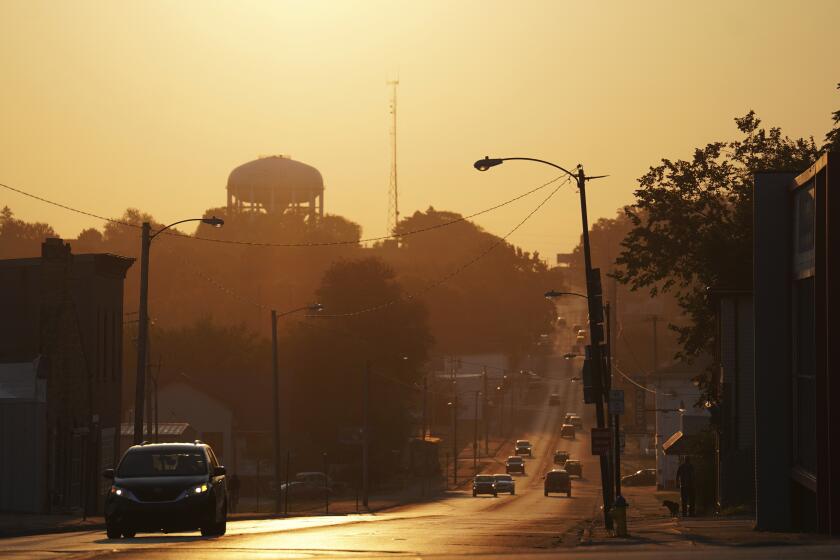George Washington’s Crossing Reenacted
WASHINGTON CROSSING, Pa. — Thousands of people lined both sides of the Delaware River on Saturday to watch a reenactment of Gen. George Washington’s icy Christmas Day 1776 crossing that scored a decisive victory in the Revolutionary War.
It took the reenactors about 20 minutes to row their three 40-foot Durham boats across the river and back--much better time than Washington and his ragtag crew of Continental soldiers made 223 years ago through the ice-choked waters in blinding sleet.
Nor was their arrival a secret this time, as people on both sides of the river cheered and clapped when the boats reached the other side.
“My heart sings every time Americans come out on the holiest of holidays to see this,” said Robert Gerenser of New Hope, as he prepared to row.
Dressed as Washington, complete with a sweeping cape and tricorn hat, he later surveyed his 100 troops and recited from Thomas Paine’s “American Crisis”--known for its opening line, “These are the times that try men’s souls”--before taking to the water.
The reenactors began their journey at Washington Crossing State Park, about 30 miles north of Philadelphia, and finished in Titusville, N.J., with ceremonies on both sides. It was the 47th annual reenactment of the crossing.
The weather was clear and chilly--about 30 degrees--but the current-day “troops” had it much better than the Continental soldiers, who did not make the crossing under sunny skies with thousands of cheering spectators but in darkness and bitter cold, navigating through floating chunks of ice.
The troops began the quarter-mile crossing at 6 p.m. on Dec. 25, 1776, and did not finish until 3 a.m. because of the weather. In all, 2,400 soldiers, 200 horses, and 18 cannons were ferried across the river. The troops marched eight freezing miles downstream to surprise Hessian mercenaries celebrating Christmas in Trenton, N.J.
Two Continental soldiers froze to death on the march but none died in the battle, which cost 30 Hessian lives and netted Washington 1,000 prisoners and six cannons. The victory bolstered sagging morale and electrified the struggling nation.
“For the reenactors, the weather is terrible because we like everything as authentic as possible,” Gerenser said. “For the public, it’s perfect to be out here to watch.”
More to Read
Sign up for Essential California
The most important California stories and recommendations in your inbox every morning.
You may occasionally receive promotional content from the Los Angeles Times.










